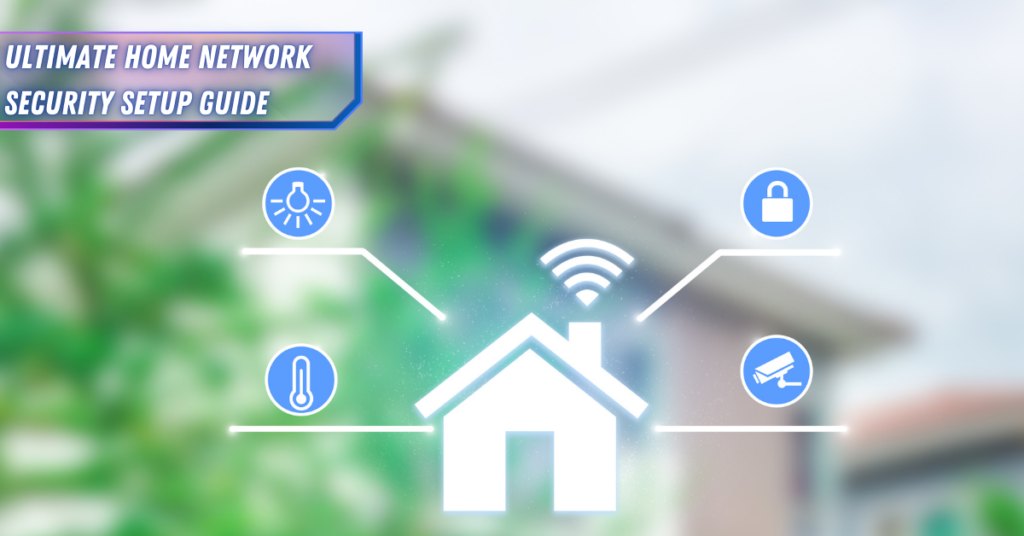Let me tell you about the day I realized my home network was a complete mess. Picture this: my teenager’s gaming console was hogging bandwidth, my work laptop was on the same network as our smart fridge (yikes!), and my guest network password hadn’t been changed in… well, let’s not talk about that. That’s when I knew it was time to set up a VLAN for home network management, and boy, what a game-changer it’s been!
I’ve spent the last 15 years as a network engineer, but honestly, I was treating my home network like a digital junk drawer. If you’re feeling overwhelmed about setting up a VLAN for home network security, don’t worry – I’ll walk you through everything I’ve learned, including the mistakes you really don’t want to make.
The “Aha!” Moment: Understanding VLANs
Think of VLANs like building walls in your house. You wouldn’t want strangers walking through your bedroom to get to the guest room, right? That’s exactly what was happening in my network before I implemented proper VLAN segmentation.
Here’s what finally made it click for me: My smart doorbell was on the same network as my work laptop containing sensitive client data. Not great! Setting up a VLAN for home network security helped me create virtual walls between different types of devices. Trust me, once you get this concept, everything else falls into place.
The Equipment That Actually Works
Okay, let me save you some headaches here. After trying to cheap out with basic routers (big mistake!), here’s what I’ve found actually works for a solid VLAN setup:
- Router: I personally use the ASUS RT-AX88U. Yes, it’s pricey, but it’s been rock-solid for two years now.
- Switch: The TP-Link TL-SG108E is perfect for beginners. It’s manageable and won’t break the bank.
- Cables: Just use Cat6. Trust me, the few extra bucks are worth it.
Pro tip: Don’t fall for the marketing hype on some of these “gaming routers.” What you need is solid VLAN support and good management features.
The Setup Process (Learn from My Mistakes)
Oh boy, do I have some stories about VLAN setup disasters! Let me share the comprehensive process I now use after learning things the hard way. That time I accidentally created a broadcast storm at 2 AM trying to set up a VLAN for home network management. Yeah, let’s help you avoid that!
Pre-Setup Planning (Skip This at Your Peril!)
First thing I learned: planning is everything. Before touching any equipment, I now create:
- Network Diagram
- Draw it out (I use draw.io – it’s free!)
- Label every single device
- Mark which VLAN each device belongs to
- Note IP ranges for each VLAN
- Configuration Checklist
- Router settings to change
- Switch port assignments
- Device IP addresses
- Firewall rules needed
Trust me on this – the 30 minutes you spend planning will save you hours of troubleshooting later. I learned this after spending an entire Sunday trying to figure out why my smart home devices couldn’t talk to each other!
Router Configuration (The Foundation)
Here’s my step-by-step router setup process (after bricking two routers, I finally got this right):
Step 1: Access Router Settings
- Connect to your router (typically http://192.168.1.1 or http://192.168.0.1)
- Log in with admin credentials
- Look for “VLAN,” “Network Segmentation,” or “Advanced Settings”
Step 2: Create Basic VLANs
bash# Example VLAN Structure
VLAN 10 - Main Home Network (192.168.10.0/24)
VLAN 20 - IoT Devices (192.168.20.0/24)
VLAN 30 - Guest Network (192.168.30.0/24)
For each VLAN, configure:
- Enable DHCP server
- Set IP range (e.g., 192.168.10.100 to 192.168.10.254)
- Configure DNS settings (typically your router’s IP or 8.8.8.8)

Switch Configuration (Where the Magic Happens)
This is where I made most of my rookie mistakes. Here’s my current process:
1: Access Switch Management
- Connect directly to the switch via Ethernet
- Find the switch IP address (usually printed on the device)
- Access web interface
2: Port Assignment
bash# Example Port Configuration
Ports 1-4: VLAN 10 (Home Network)
Ports 5-6: VLAN 20 (IoT Devices)
Ports 7-8: VLAN 30 (Guest Network)
Port 24: Trunk Port (Router Connection)
3: Configure Trunk Port
- Select the port connecting to your router
- Enable trunk mode
- Allow all created VLANs on trunk port
Wi-Fi Network Setup
Step 1: Create Multiple SSIDs
- Access wireless settings
- Create separate networks:
- “Home-Network” (VLAN 10)
- “IoT-Devices” (VLAN 20)
- “Guest-Network” (VLAN 30)
Step 2: SSID Security
For each network:
- Enable WPA3 or WPA2 encryption
- Set strong, unique passwords
- Enable client isolation on guest network
Firewall Rules
Basic Security Rules
bash# Example Rules
Allow VLAN 10 → All Networks
Allow VLAN 20 → Internet Only
Allow VLAN 30 → Internet Only, Limited Bandwidth
Testing (Don’t Skip This!)
Here’s my testing checklist (born from many late-night troubleshooting sessions):
Initial Connectivity Testing
- Basic Connection Test
bash# Test from a device on each VLAN
ping 192.168.10.1 # Router IP for VLAN 10
ping 192.168.20.1 # Router IP for VLAN 20
ping 192.168.30.1 # Router IP for VLAN 30
ping 8.8.8.8 # Internet connectivity
VLAN Isolation Testing
Cross-VLAN Communication
- Connect two devices to different VLANs
- Attempt to ping between them:
bash# From VLAN 10 device
ping 192.168.20.x # Should fail
ping 192.168.30.x # Should fail
# From VLAN 20 device
ping 192.168.10.x # Should fail
ping 192.168.30.x # Should fail
Network Discovery Test
- Run network scanning tools from each VLAN:
bash# Using nmap (install if needed)
nmap -sn 192.168.10.0/24 # Scan VLAN 10
nmap -sn 192.168.20.0/24 # Scan VLAN 20
nmap -sn 192.168.30.0/24 # Scan VLAN 30
Performance Testing
Speed Tests
- Internet Speed:
- Run speed tests on each VLAN
- Compare results to ensure proper bandwidth allocation
- Test during peak usage times
Latency Testing
bash# Test latency to gateway
ping -c 100 192.168.10.1 # VLAN 10
ping -c 100 192.168.20.1 # VLAN 20
ping -c 100 192.168.30.1 # VLAN 30
# Test internet latency
ping -c 100 8.8.8.8 # Google DNS
Security Testing
Firewall Rule Verification
- Test all configured rules:
- Attempt accessing shared resources
- Verify guest network isolation
- Test IoT device restrictions
Access Point Security
- Verify SSID assignments:
- Connect to each wireless network
- Confirm correct VLAN assignment
- Test client isolation on guest network
Service Testing
DHCP Functionality
- Test DHCP on each VLAN:
- Release/renew IP addresses
- Verify the correct IP range assignment
- Check lease times
DNS Resolution
bash# Test DNS resolution
nslookup google.com
nslookup amazon.com
Load Testing
Network Stress Test
- Simultaneous connections:
- Connect multiple devices to each VLAN
- Run concurrent speed tests
- Monitor router/switch performance
Quality of Service (QoS)
- Test bandwidth priorities:
- Stream video on main network
- Transfer large files on IoT network
- Monitor guest network speeds
Final Words of Wisdom
Remember, a VLAN for home network security isn’t a set-it-and-forget-it solution. It’s more like a garden – it needs regular attention to truly flourish. I check my VLANs monthly, update documentation quarterly, and do a complete review annually. Sounds like a lot? Maybe. But it’s way better than dealing with network emergencies at 2 AM!
Start your VLAN journey today, but remember: patience is your friend. Take it step by step, test it thoroughly, and document everything. Your future self will thank you, and your network will be more secure and efficient than ever.
And hey, if you mess up (we all do), just remember that every network engineer has their share of “learning experiences.” The key is to learn from them, document them, and try not to repeat them. Now go forth and segment that network!



